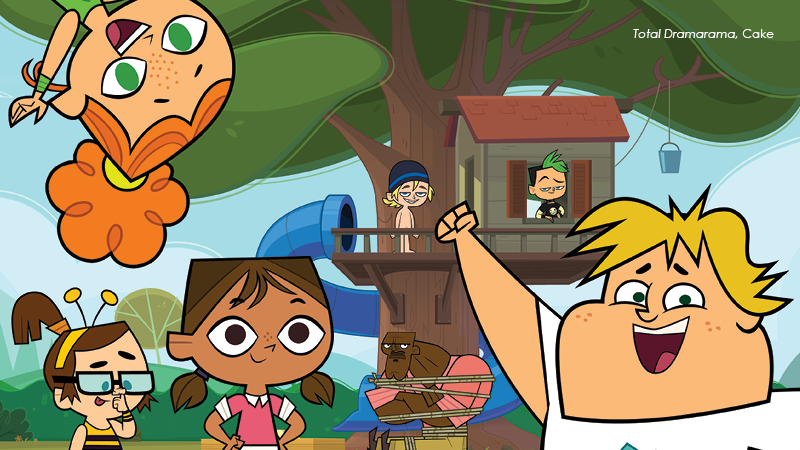
Cake's sales manager, Julien Farcat, talks about surfacing content, improving discoverability, YouTube, IP and rights, Asia's acquisition habits, monetising kids content and what the biggest influences in 2020...
Are you seeing
any significant changes in the way kids buyers are acquiring content in/for
Asia?
"The main
change would have to be the growing importance of new media rights. Many
Free and Pay TV channels now insist on VOD rights which come in addition to the
existing standalone SVOD platforms. VOD platforms including SVOD, AVOD and TVOD
are more popular now and we have seen many requests for YouTube channel
collaborations.
Windowing has become increasingly more complex. Indeed, new media platforms require further exclusivity, which can make some linear deals more challenging. in response, some linear channels will ask for longer exclusivity as well as additional holdbacks.
In terms of content, series aimed at 4-7 years and 6-12 years continue to work well and we have requests for educational content from time to time although less so than in Europe."
Did monetising
kids content in Asia become more difficult in 2019? Why?
"Recent
regulations have reduced opportunities in China by limiting foreign
acquisitions to 30%. In the rest of Asia, the acquisition strategy has remained the same on
the whole, although budget constraints have been experienced by some
companies."
Do you think it
will become easier to monetise kids content in 2020?
"With less foreign content in China, platforms have become more
selective, as they are unable to acquire as much volume as before. In the rest
of the region, we hope to conclude more VOD deals especially in India, with the
launch of more VOD platforms. We need to be flexible ensuring our deals maximise
revenue and exposure while ensuring we remain sensitive to different windowing
requirements."
What do you
think will have the biggest influence on kids programming (production and
distribution) in Asia in 2020?
"New platforms
such as Disney+, Warner Media, Universal etc will have an impact on the way in
which broadcasters and platforms select their series. Some series will only be
available e...
Cake's sales manager, Julien Farcat, talks about surfacing content, improving discoverability, YouTube, IP and rights, Asia's acquisition habits, monetising kids content and what the biggest influences in 2020...
Are you seeing
any significant changes in the way kids buyers are acquiring content in/for
Asia?
"The main
change would have to be the growing importance of new media rights. Many
Free and Pay TV channels now insist on VOD rights which come in addition to the
existing standalone SVOD platforms. VOD platforms including SVOD, AVOD and TVOD
are more popular now and we have seen many requests for YouTube channel
collaborations.
Windowing has become increasingly more complex. Indeed, new media platforms require further exclusivity, which can make some linear deals more challenging. in response, some linear channels will ask for longer exclusivity as well as additional holdbacks.
In terms of content, series aimed at 4-7 years and 6-12 years continue to work well and we have requests for educational content from time to time although less so than in Europe."
Did monetising
kids content in Asia become more difficult in 2019? Why?
"Recent
regulations have reduced opportunities in China by limiting foreign
acquisitions to 30%. In the rest of Asia, the acquisition strategy has remained the same on
the whole, although budget constraints have been experienced by some
companies."
Do you think it
will become easier to monetise kids content in 2020?
"With less foreign content in China, platforms have become more
selective, as they are unable to acquire as much volume as before. In the rest
of the region, we hope to conclude more VOD deals especially in India, with the
launch of more VOD platforms. We need to be flexible ensuring our deals maximise
revenue and exposure while ensuring we remain sensitive to different windowing
requirements."
What do you
think will have the biggest influence on kids programming (production and
distribution) in Asia in 2020?
"New platforms
such as Disney+, Warner Media, Universal etc will have an impact on the way in
which broadcasters and platforms select their series. Some series will only be
available exclusively on platforms and won’t be able to reach Free or Pay TV
channels as they did before. Broadcasters and platforms will become more
selective in their acquisitions whilst retaining as many rights as they can in
order to meet tough competition and a growing number of broadcasters."
What industry
sector in Asia acquires the most from you (free-TV, pay-TV, streaming, other)?
"Across the
region, we are working mainly with Free TV channels followed by Pay TV
channels. However, in China on the whole, we work with VOD platforms where we
have successfully concluded deals with Tencent for PBS space series Ready Jet
Go! and BAFTA-nominated Pablo which reflects the real-life experiences of
children with autism. Space Chickens in Space, our co-pro with Anima for
Disney XD is airing on Mango Hunan TV along with CBeebies pre-school series
Olobob Top. We are working regularly with Free TV channels including RTHK
in Hong Kong and EBS in Korea, as well as CJ for pay TV in Korea and
across the region with Turner Asia, who acquired Total Dramarama, the much
anticipated prequel to the globally successful Total Drama franchise."
How have rights
negotiations for kids content changed in the past year or so?
"As VOD rights are taking on more significance, the strategy is now to
include those rights in free and pay TV deals. Some standalone VOD platforms
can provide additional business, but are not replacing linear deals in some
regions in terms of value. Increasingly, key platforms are asking for exclusive
rights and different windowing models that used to be possible, are now
difficult to manage. The key now is to continue to develop business while
simultaneously managing to accommodate each broadcaster’s requirements."
Excerpts of this interview were published in ContentAsia's print magazine for the ATF 2019
























